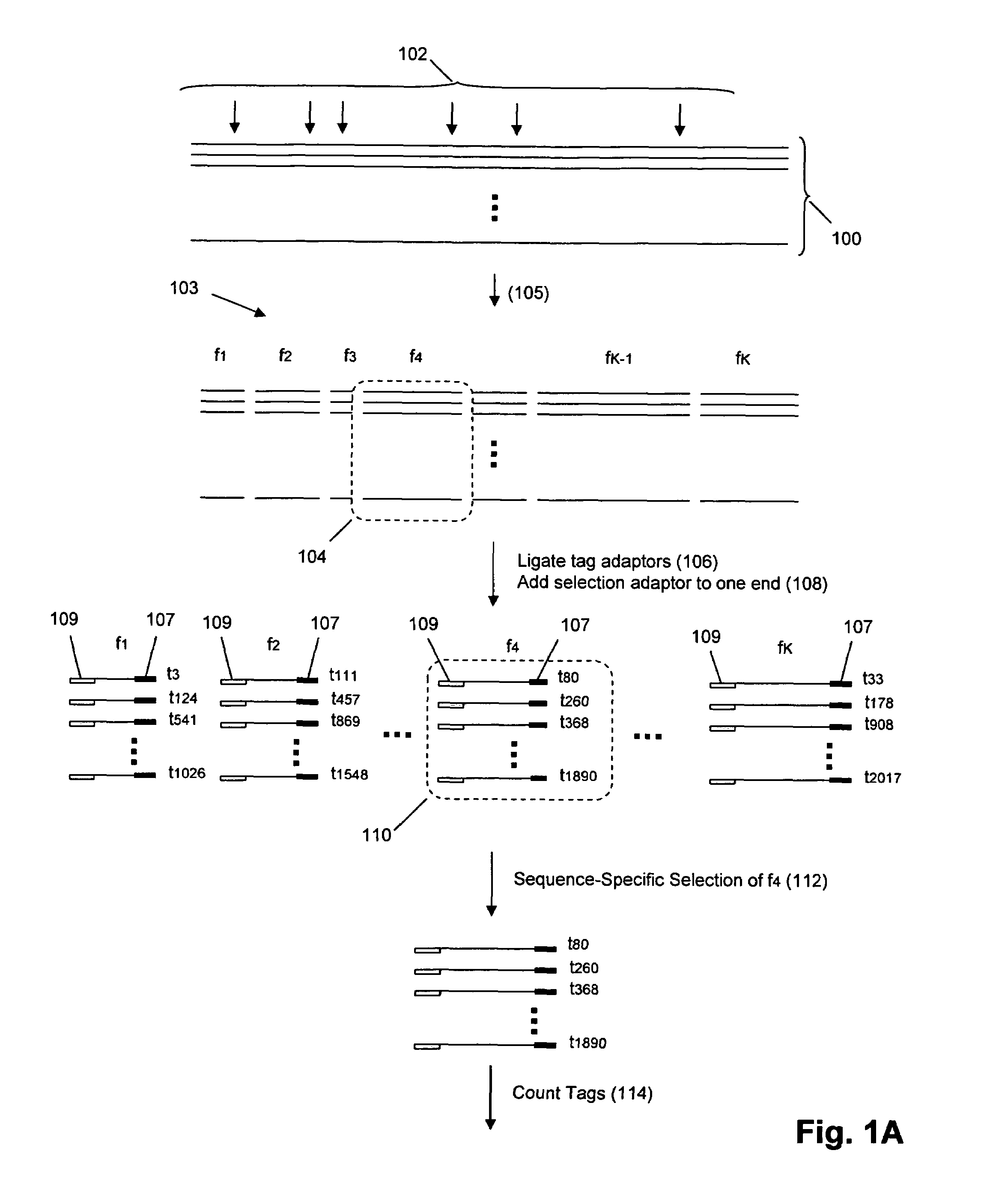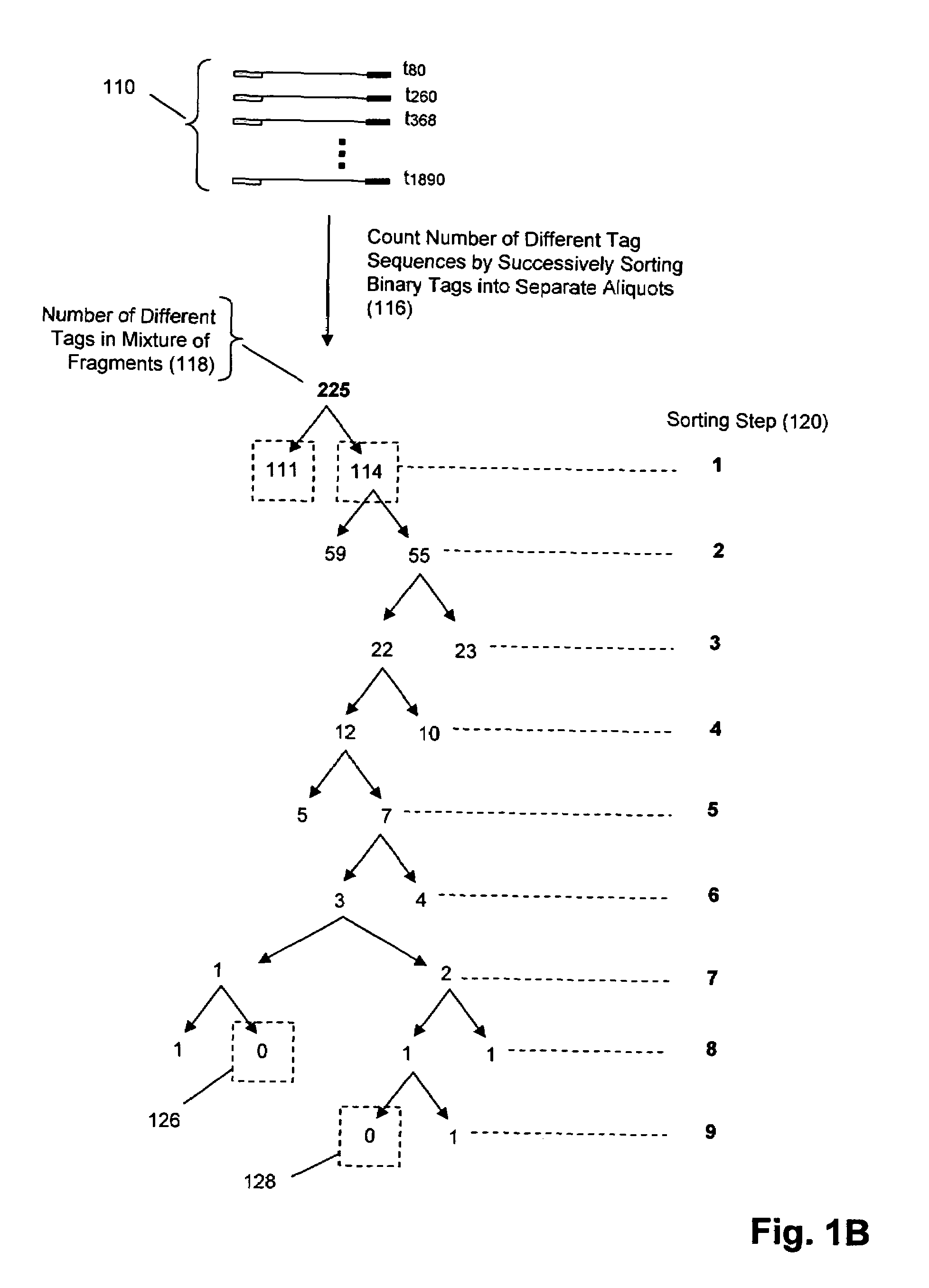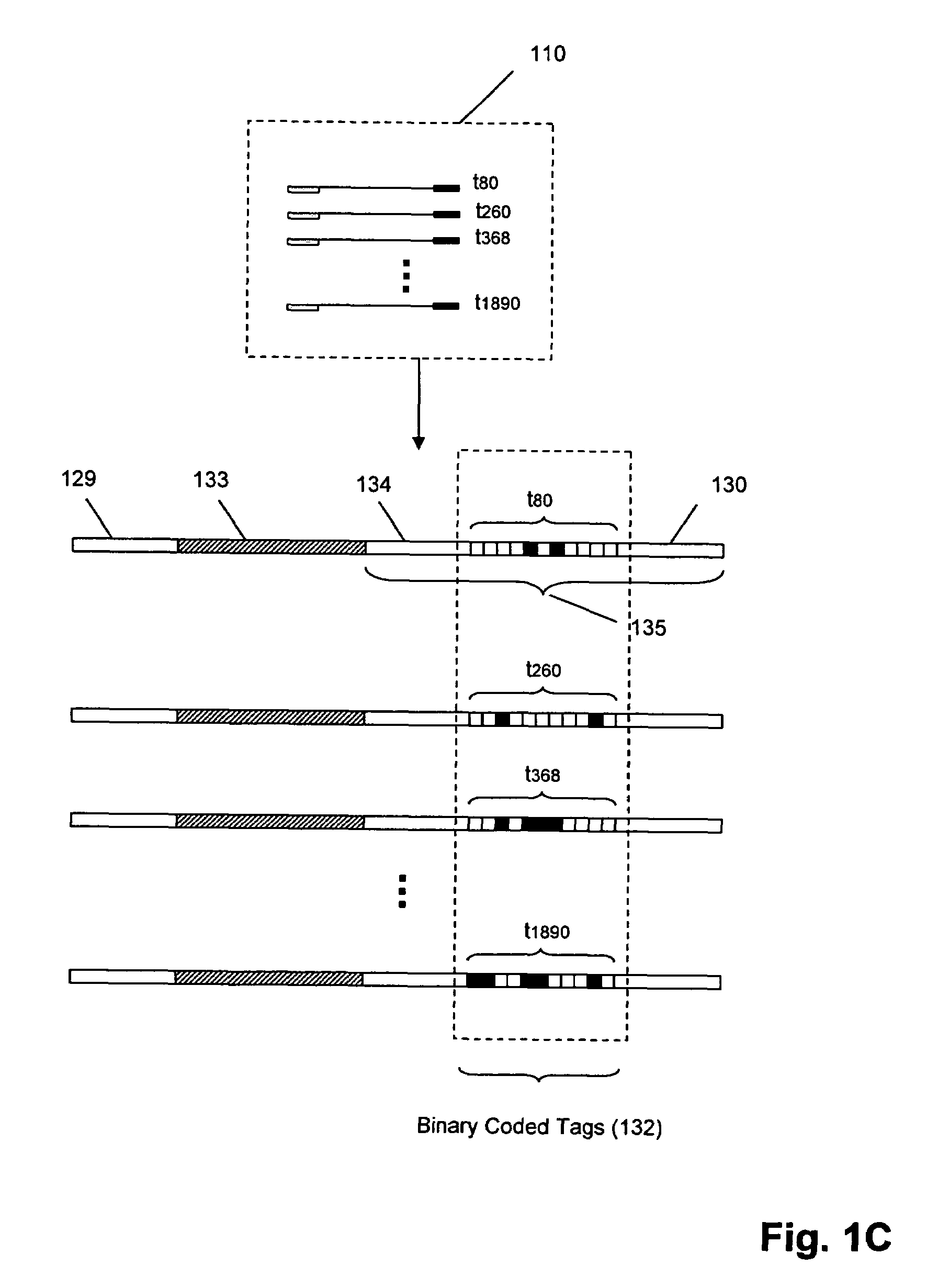Molecular counting
a technology of molecule and composition, applied in the field of compositions and methods for counting molecules in samples, can solve the problems of expensive implementation and usually more difficult problems, and achieve the effect of high probability
- Summary
- Abstract
- Description
- Claims
- Application Information
AI Technical Summary
Benefits of technology
Problems solved by technology
Method used
Image
Examples
example i
Construction of a Metric Tag Set
[0098]In this example, a set of 64 double stranded composite tags was constructed wherein each composite tag contains a double stranded metric tag, both of whose complementary single strands are in the range of from 28 to 91 bases in length after Kpn I digestion. The lengths of metric tags that may be released from composite tags in accordance with this example are listed in Table II of FIG. 8A. Such tags are used as outlined in FIG. 8B. That is, in one embodiment, a set of probes (800) is produced having three components: binary tag component (802), composite tag component (804) (which comprises a metric tag), and target-specific component (806). In this embodiment, the top strand of binary tag component (802) is shown as having a 5′ exonuclease-resistant end (filled-in box (808)), which allows conversion to single stranded form. The three components are combined (810), e.g. by ligation, to produce double stranded probe (814), which, in turn, is conv...
example ii
Construction of a Binary Tag Set
[0103]In this example, a scheme for constructing an arbitrarily large set of binary tags of the form “[GACX]n” is described, where X may be A, G, C, or T, and n is the number of subunits in the tags. (Below, “GACA”, “GACG”, “GACC”, and “GACT” are sometimes referred to as the binary A, G, C, and T words, respectively). The scheme, which follows the general approach given above, is described in FIGS. 9A-9E. In accordance with one aspect of the invention, the scheme provides a method of producing equimolar amounts of member tags of a set. This feature is accomplished by generating and isolating a structure that contains two members of the set and then cleaving it into two parts that necessarily are present in equimolar amounts (A & T or G & C, as shown in FIG. 9C). Turning to FIG. 9A, constructs of the form (900) (SEQ ID NO: 32) are synthesized that at position (902) (indicated by the basepair “X / X”) include basepairs A / T, T / A, G / C, and C / G. Positions wi...
example iii
Sensitivity of Sorting by Sequence
[0105]In this example, the use of the sensitivity of the sorting-by-sequence technique for counting tags was tested. A mixture of four polynucleotides was produced. Each polynucleotide shared a common sequence at position 1 of the base to be sorted, followed by A, G, C or T at position 2, and again a common base at position 3. Each polynucleotide was tagged with one of four different composite tags. After incorporation of a biotinylated base at the sorting site (position 2), polynucleotides were selected by streptavidin and the metric tags embedded within the composite tags released by cleavage with Kpn I, which, in turn, yielded metric tags of 29, 33, 34 or 35 base pairs long, respectively. Detection was performed by direct visualization by fluorescent labeling, without PCR, of the sorted polynucleotides after electrophoresis.
[0106]The polynucleotides were prepared by PCR from the plasmids containing the appropriate composite tags. Table III shows ...
PUM
| Property | Measurement | Unit |
|---|---|---|
| diameter | aaaaa | aaaaa |
| concentration | aaaaa | aaaaa |
| volume | aaaaa | aaaaa |
Abstract
Description
Claims
Application Information
 Login to View More
Login to View More - R&D
- Intellectual Property
- Life Sciences
- Materials
- Tech Scout
- Unparalleled Data Quality
- Higher Quality Content
- 60% Fewer Hallucinations
Browse by: Latest US Patents, China's latest patents, Technical Efficacy Thesaurus, Application Domain, Technology Topic, Popular Technical Reports.
© 2025 PatSnap. All rights reserved.Legal|Privacy policy|Modern Slavery Act Transparency Statement|Sitemap|About US| Contact US: help@patsnap.com



